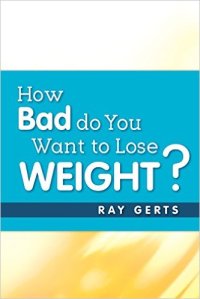How do you want to look at the next New Year's Eve celebration? Do you need to fit into your skinny jeans or your barely-there cocktail dress for a special event? Want to look great and make that ex-boyfriend a little bit jealous? Then avoid holiday weight gain and get - or stay - skinny throughout the holiday season.
Clever Ways to Avoid Holiday Weight Gain
You've probably heard the age-old tips about moderation and portion control at holiday meals.
If you overindulge at any event, you put yourself at risk for gaining weight. But you already knew that. You need clever tips to keep the weight off. Try these tips to keep your body from falling victim to the holiday heft.
Skip yoga. There's nothing wrong with yoga - especially during this stressful time of year. But yoga doesn't burn calories as effectively as some other workouts. During the holidays, use your precious workout time to do the most effective fat burning workouts.
Brisk Walk. A 30 minute brisk walk every day will burn the extra calories to help you control your weight. How brisk is brisk? You have to get your heart rate up. That's the key to burning calories. Some people go up and down the stairs at work or at the mall, some people walk fast and some people use weights. You have to do what your comfortable with.
Do Tabata. You'll burn more calories and blast more fat if you do high intensity interval training. One of the easiest ways to set up these sessions is to plan Tabata style workouts.No equipment needed. Use body weight exercises that shape your muscles and increase your heart rate.
Dial back on the booze. The fastest path to weight gain is to drink your way through the holidays. You'll consume too many calories from booze and you'll end up making bad food choices.
Skip starch, choose fruit. At each meal, choose fresh fruit instead of starchy side dishes like potatoes or rice. Most fruit is low in calories and has a high water content. You'll get full without consuming too many calories and you'll satisfy your sweet tooth at the same time.
Cut snacks in half. Do you know how many calories you consume from snacks? Snacks aren't a bad idea, but we often eat too much when we munch between meals. If you snack, cut each portion in half so that you consume fewer calories.
Reorganize. Grab your rubber gloves - it's time to clean out your kitchen. Get rid of the junk food that doesn't deserve your attention during the holidays, then set up your kitchen for smart eating.
Lastly, use your smart phone as much as possible. Apps like CalorieCount.com provide information about the food that you eat during the holidays and it can help to guide your food choices. You're more likely to eat less, avoid weight gain and stay skinny if you have a realistic idea of the calories in your food. Remember not to confuse food cravings with hunger. Most people eat out of habit, not because their hungry. We eat because it's time to eat, but that doesn't mean you have to fill up.
If you really want to lose your body fat than look for my Ebook at the websites listed below. You'll get information on Healthy eating, exercise, and diet.
“How Bad Do You Want To Lose Weight?” is available at all the online bookstores selling for $1.99. Go to any of the websites and search the title to find my Ebook. This book gives you all you need to lose weight without spending money on gym memberships, diet plans or meal plans. Look for my book. at Amazon.com, B&N.com, iBooks, Kobo.com, Scribd.com, or Gardner Books in the U.K.

/about/458222005-56aa05a83df78cf772ac0f31.jpg)

/about/102754868-56aa05b95f9b58b7d00081d0.jpg)



